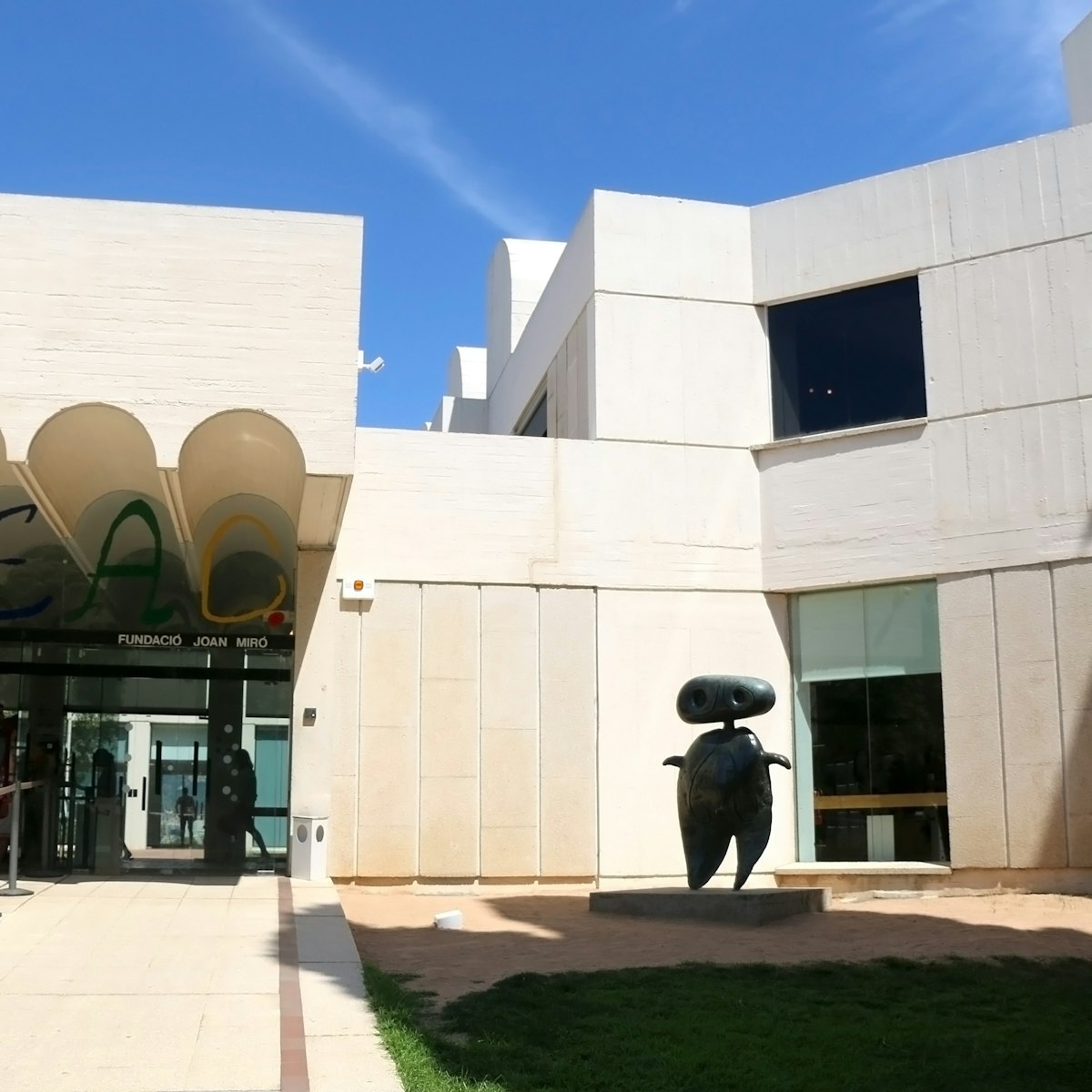Barcelona’s central place of worship presents a magnificent image. The richly decorated main facade, dotted with gargoyles and the kinds of stone intricacies you would expect of northern European Gothic, sets it quite apart from other Barcelona churches. The facade was actually added from 1887 to 1890. The rest of the building dates to between 1298 and 1460. Its other facades are sparse in decoration, and the octagonal, flat-roofed towers are a clear reminder that, even here, Catalan Gothic architectural principles prevailed.
The interior is a broad, soaring space divided into a central nave and two aisles by lines of elegant, slim pillars. The cathedral was one of the few churches in Barcelona spared by the anarchists in the civil war, so its ornamentation, never overly lavish, is intact.
In the first chapel (for prayer only) on the right from the main northwest entrance, the main crucifixion figure above the altar is Sant Crist de Lepant; it is said Don Juan’s flagship bore it into battle at Lepanto and that the figure acquired its odd stance by dodging an incoming cannonball. Further along this same wall, past the southwest transept, are the wooden coffins of Count Ramon Berenguer I and his wife Almodis, founders of the 11th-century Romanesque predecessor to the present cathedral. Left from the main entrance is a 1433 marble baptismal font where, according to one story, six native North Americans brought to Europe by Columbus after his first voyage to the Americas were bathed in holy water.
In the middle of the central nave is the exquisitely sculpted late 14th-century timber coro (choir stalls; closed during worshipping hours). The coats of arms on the stalls belong to members of the Barcelona chapter of the Order of the Golden Fleece. Emperor Carlos V presided over the order’s meeting here in 1519. Take the time to look at the artisanship up close – the Virgin Mary and Child depicted on the pulpit are especially fine.
A broad staircase before the main altar leads you down to the crypt, which contains the 14th-century tomb of Santa Eulàlia, one of Barcelona’s two patron saints and more affectionately known as Laia. The reliefs on the alabaster sarcophagus, executed by Pisan artisans, recount some of her tortures and, along the top strip, the removal of her body to its present resting place.
For a bird’s-eye view (mind the poop) of medieval Barcelona, visit the cathedral’s roof and tower by taking the lift (€3; cash only) from the Capella dels Sant Innocents near the northeast transept.
From the southwest transept, exit by the partly Romanesque door (one of the few remnants of the present church’s predecessor) to the leafy claustre (cloister), with its fountains and flock of 13 geese. The geese supposedly represent the age of Santa Eulàlia at the time of her martyrdom and have, generation after generation, been squawking here since medieval days. One of the cloister chapels commemorates 930 priests, monks and nuns martyred during the civil war.
Along the northern flank of the cloister you can enter the Sala Capitular (Chapter House). Although it’s bathed in rich red carpet and graced with fine timber seating, the few artworks gathered here are of minor interest; among them features a pietà by Bartolomeo Bermejo. Accessed from the northwest corner of the cloister, the Capella de Santa Llúcia is another of the few reminders of Romanesque Barcelona (although the interior is largely Gothic). It was originally the chapel for the adjacent Bishop's Palace and, from the exterior, you can see that, although incorporated into La Catedral, it is actually a separate building.
Although technically it's free to go into La Catedral to pray, in practice if you go any time during tourist visiting hours, you'll need to pay. Otherwise, you can enter for free before 12.30pm (2pm on Sunday), though you'll have to pay to visit the choir stalls, Sala Capitular and/or roof.








